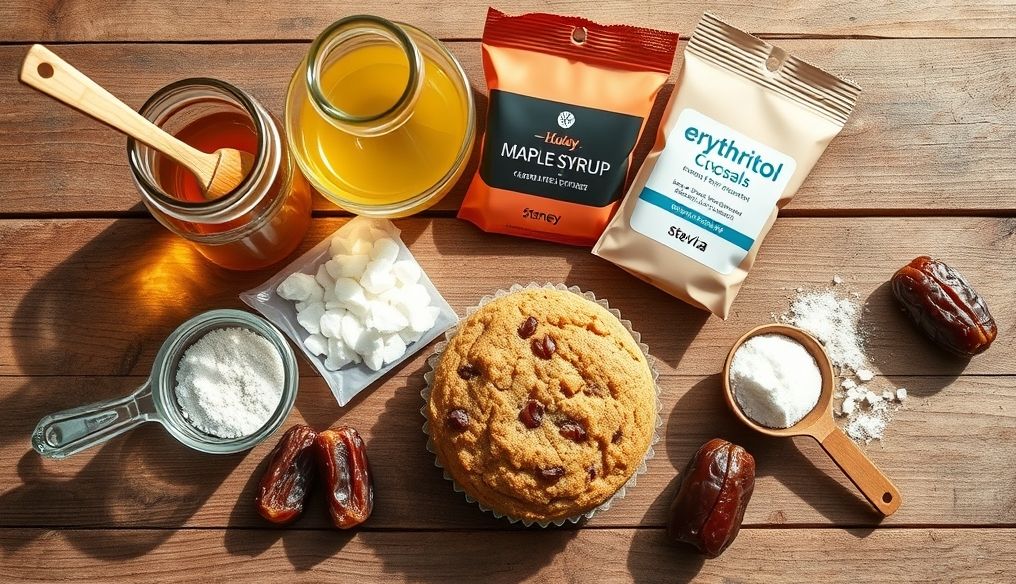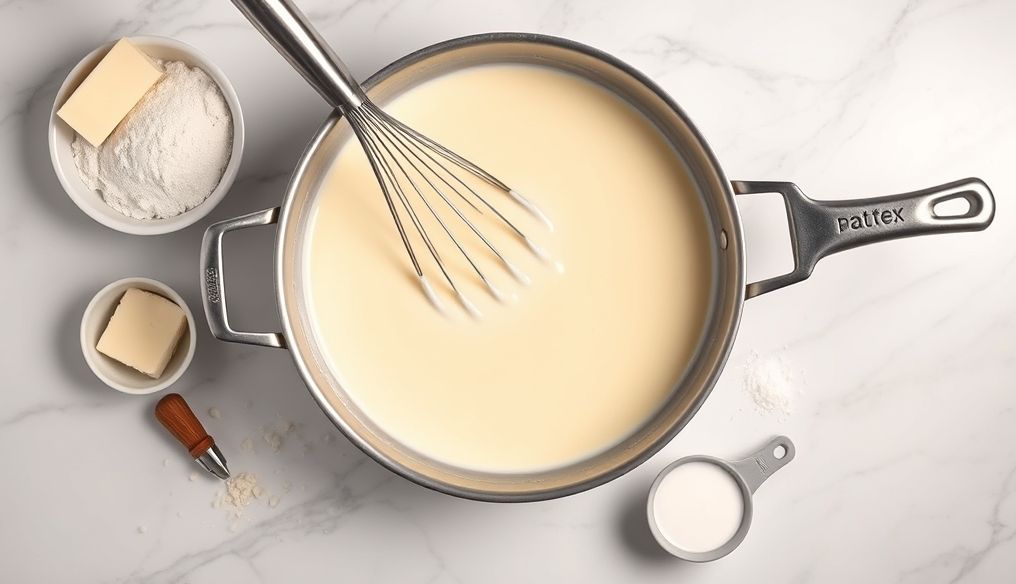What are the healthy alternatives to white sugar in desserts and how can they be used effectively?
White sugar, or sucrose, is a commonly used sweetener in desserts and beverages. However, consuming it in large quantities is associated with numerous health problems such as weight gain, type 2 diabetes, and heart disease. Fortunately, there are several healthy alternatives that can be used to sweeten desserts without causing the same negative effects.
Chapter 1: Why Should You Look for Alternatives to White Sugar?
Negative Health Effects of White Sugar
White sugar provides empty calories, meaning it contains little to no nutritional value. High consumption of white sugar can lead to:
- Weight gain and obesity
- Insulin resistance and type 2 diabetes
- High levels of bad cholesterol (LDL) and low levels of good cholesterol (HDL)
- Tooth decay
- Increased risk of cardiovascular diseases
Benefits of Using Sugar Alternatives
Replacing white sugar with healthy alternatives can help in:
- Reducing calorie intake
- Improving blood sugar control
- Providing some additional nutrients
- Reducing the risk of chronic diseases
Chapter 2: Types of Healthy Alternatives to White Sugar
1. Honey
Honey is a natural sweetener produced by bees. It contains antioxidants and some vitamins and minerals. However, it should be used in moderation as it is still high in calories.
How to use it: Replace one cup of white sugar with ¾ cup of honey. Reduce the amount of liquid in the recipe by ¼ cup.
2. Maple Syrup
Maple syrup is a natural sweetener extracted from maple trees. It contains some minerals like manganese and zinc. Choose pure maple syrup (Grade A or B) for the best quality.
How to use it: Replace one cup of white sugar with ¾ cup of maple syrup. Reduce the amount of liquid in the recipe by ¼ cup.
3. Date Syrup
Date syrup is a natural sweetener made from ground dates. It contains fiber, potassium, and magnesium.
How to use it: It can be used as a sugar substitute in many recipes, but may alter the texture and color of the final product.
4. Stevia
Stevia is a natural sweetener derived from the leaves of the stevia plant. It contains no calories and does not affect blood sugar levels.
How to use it: Use it in very small amounts as it is much sweeter than sugar. Follow the instructions on the package.
5. Erythritol
Erythritol is a natural sugar alcohol. It contains very few calories and does not affect blood sugar levels.
How to use it: It can be used as a 1:1 substitute for sugar in most recipes.
6. Monk Fruit
Monk fruit is a natural sweetener extracted from monk fruit. It contains no calories and does not affect blood sugar levels.
How to use it: Use it in very small amounts as it is much sweeter than sugar. Follow the instructions on the package.
7. Coconut Sugar
Coconut sugar is made from the sap of coconut palm flowers. It contains some minerals and fiber, but it is still high in calories.
How to use it: It can be used as a 1:1 substitute for sugar in most recipes.
8. Dates
Dates are a naturally sweet fruit rich in fiber, vitamins, and minerals. They can be used to sweeten desserts in a healthy way.
How to use it: Dates can be ground into date paste and used as a sugar substitute in cakes and cookies.
Chapter 3: Tips for Using Healthy Sugar Alternatives in Desserts
1. Start with Small Amounts
When trying a new sugar alternative, start with small amounts to see how it affects the taste and texture.
2. Adjust the Amount of Liquid
Some liquid alternatives like honey and maple syrup can affect the consistency of the recipe. Reduce the amount of other liquid in the recipe to compensate.
3. Pay Attention to Temperature
Some alternatives like stevia and monk fruit may lose their sweetness when heated for too long. Add them at the end of cooking if necessary.
4. Use a Combination of Alternatives
You can use a combination of alternatives for best results. For example, you can use stevia with erythritol to reduce the potential bitter taste of stevia.
5. Read Labels Carefully
Make sure to read the labels carefully when buying sugar alternatives. Some products may contain unwanted additives.
Chapter 4: Healthy Dessert Recipes Using Sugar Alternatives
1. Healthy Carrot Cake
Use date syrup or honey to sweeten carrot cake instead of white sugar. Add plenty of grated carrots and spices like cinnamon and ginger for a rich flavor.
2. Healthy Oatmeal Cookies
Use mashed dates or maple syrup to sweeten oatmeal cookies. Add nuts and seeds for added nutritional value.
3. Healthy Chia Pudding
Use stevia or monk fruit to sweeten chia pudding. Add fresh or frozen fruits for a refreshing flavor.
4. Healthy Banana Muffins
Use very ripe bananas to naturally sweeten banana muffins. Add some honey or maple syrup if you need more sweetness.
Chapter 5: Comparison of Different Alternatives in Terms of Nutritional Value
| Alternative | Calories (per teaspoon) | Effect on Blood Sugar | Nutritional Value |
|---|---|---|---|
| Honey | 21 | High | Antioxidants |
| Maple Syrup | 13 | Medium | Manganese and Zinc |
| Date Syrup | 20 | Medium | Fiber, Potassium, and Magnesium |
| Stevia | 0 | Low | Virtually None |
| Erythritol | 0 | Low | Virtually None |
| Monk Fruit | 0 | Low | Virtually None |
| Coconut Sugar | 15 | Medium | Some Minerals and Fiber |
| Dates | 20 | Medium | Fiber, Vitamins, and Minerals |
Chapter 6: Potential Risks of Using Sugar Alternatives
1. Digestive Issues
Some alternatives like erythritol may cause digestive issues such as bloating, gas, and diarrhea in some people, especially when consumed in large quantities.
2. Allergic Reactions
Although rare, some people may experience allergic reactions to some alternatives like stevia.
3. Bitter Taste
Some alternatives like stevia and monk fruit may have a bitter aftertaste that can be unpalatable to some.
4. Nutrient Deficiency
Replacing sugar with calorie-free alternatives may lead to nutrient deficiency if not compensated for from other sources.
Chapter 7: How to Choose the Right Alternative for You?
Choosing the right sugar alternative depends on several factors, including:
- Personal Preferences: Choose the alternative that you enjoy the taste of.
- Health Needs: If you have diabetes, choose an alternative that does not affect blood sugar levels.
- Recipe: Some alternatives work better in some recipes than others.
- Cost: The cost of different alternatives varies.
Chapter 8: Additional Tips for Reducing Sugar Consumption
1. Read Food Labels
Be aware of the amount of added sugar in processed foods and beverages.
2. Reduce Sugary Drinks
Sugary drinks like soda and sweetened juices are a major source of added sugar.
3. Eat Fresh Fruits
Fresh fruits are a healthy way to satisfy a sweet craving.
4. Prepare Your Meals Yourself
When you prepare your meals yourself, you can control the amount of sugar added.
5. Be Patient
It may take some time to adjust to reducing sugar consumption. Be patient and keep trying.
Conclusion
Replacing white sugar with healthy alternatives in desserts is a positive step towards improving your health. There are many delicious and nutritious alternatives available, so you can enjoy your favorite desserts without feeling guilty. Remember that moderation is key, even when using healthy alternatives.




